Top 3 Freelancing Trends in the Gig Economy
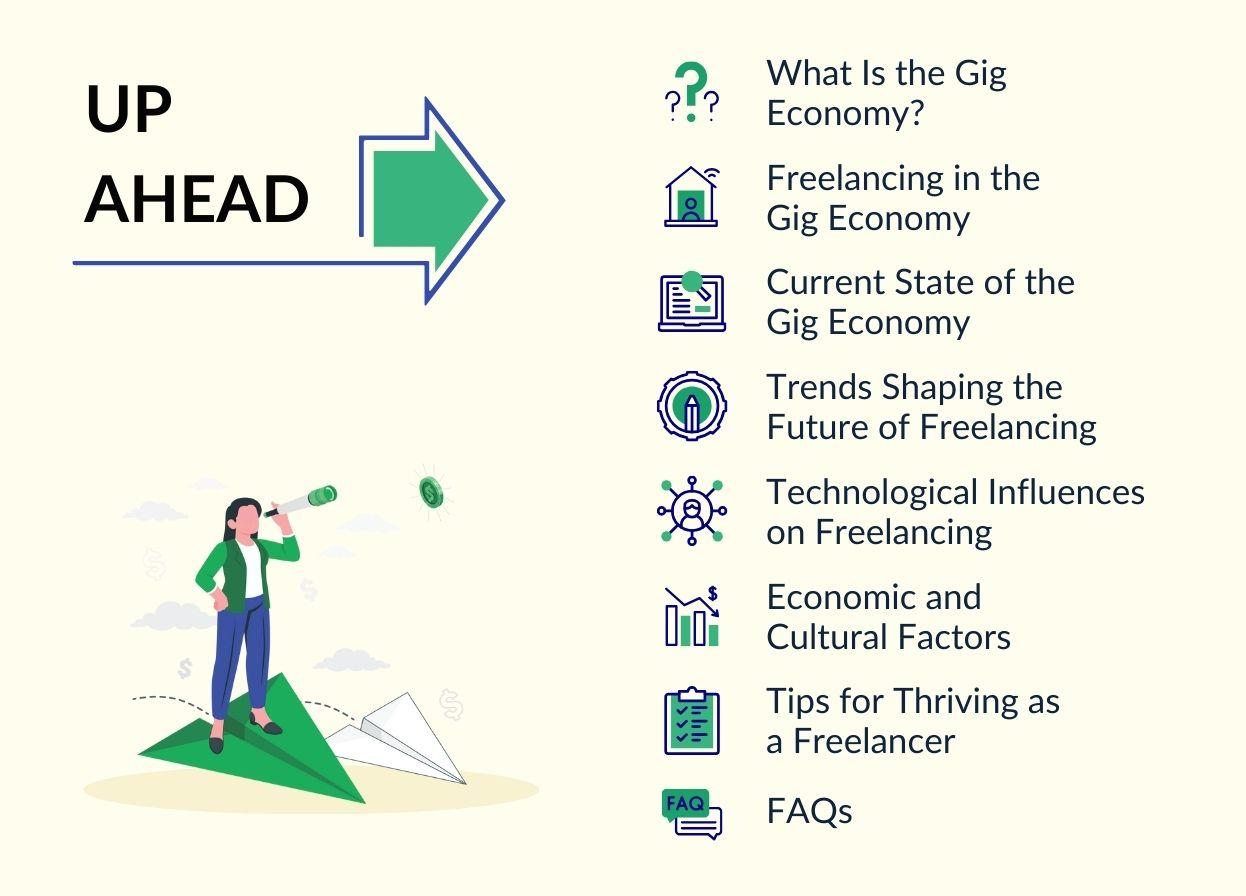

What Is the Gig Economy?
A gig economy is a flexible economic system where labour and resources are exchanged through digital platforms that actively connect buyers and sellers. In this type of economy, businesses engage independent contractors and freelancers instead of hiring full-time employees, as the work is temporary and doesn't follow a fixed schedule.
The gig economy yields more affordable, efficient, and adaptable services, providing consumers with a quick and distinctive alternative to traditional, standardised business models. Moreover, it operates exclusively online, making it particularly popular among the younger demographic.
Freelancing in the Gig Economy
While freelancing and gig work have always been part of India's work culture, their significance has skyrocketed in recent years. Thanks to technology and the rise of platform-based companies, the gig economy has taken centre stage, offering countless opportunities for freelancers nationally.
The gig economy refers to the freelancers and side-hustlers job sector. These jobs are different from the traditional employer-employee relationship. They are characterised by:
- On-demand work
- Compensation on a task basis
- Short-term relationships between the workers and clients
- The use of digital platforms that act as intermediaries between the gig worker/freelancer/independent contractor and the final client.
You can understand the gig economy as a free market system where freelancers and independent contractors engage in flexible projects with multiple clients.
The entry barriers in the gig economy are low, allowing more professionals to easily venture into freelancing. This creates a hyper-competitive business environment. Moreover, the Gig Economy Report by NITI Aayog suggests that the demand for professionals with medium-quality skills is decreasing, and there is an upsurge in the demand for highly skilled professionals.
Thus, freelancers need to learn advanced skills and stay updated with the latest industry trends to advance their careers. This blog guides you through the latest trends and factors impacting the gig economy and the future of freelancing.
Current State of the Gig Economy
Over 57 million people in the US are engaged in gig work whereas in India, over 15 million workers are engaged in freelance professions. In fact, the gig economy can create up to 90 million jobs in India, leading to the growth of the country's GDP by 1.25%. However, which professions are currently in demand?
Diversity of Freelance Professions and Industries
Freelance professions are gradually increasing across various industries. As per FlexJobs, the fastest growth of freelancing jobs is in the following industries:
- Communications
- Graphic design
- Marketing
- Bookkeeping
- Accounting and finance
- Copywriting
- Social media management
- Project management
- Recruitment
- Customer service representative
- Paralegal
Other freelancing jobs that have witnessed a sudden spike in the latter half of 2022 are:
- Android development
- Application programming interface
- Blog writing
- YouTube content
- Software development
- Lead generation
- Cold calling
Popular Platforms for Freelancers
According to LIRNEasia's survey report on freelancing in India, online workers and freelancers majorly find jobs on global or local platforms, websites or applications. The most popular ones are:
Many Indian freelancers also find opportunities through local platforms like Just Dial, Sulekha and Urban Clap. Then, what does the future of freelancing look like?
Trends Shaping the Future of Freelancing
"In countries like India, businesses are growing comfortable with remote freelance management consultants like our platform. It’s a significant change for the better, and will drive more freelance careers.” - Jay Desai, the CEO of Stratlancer.
1. Blurring lines between traditional employment and freelancing
The essence of the gig economy is work flexibility. However, many companies are hiring full-time freelancers, especially in the tech industry. It has both pros and cons. Freelancers have the flexibility to work and also get secured income opportunities.
On the contrary, many companies hire full-time freelancers and ask them to sign non-compete agreements, prohibiting them from engaging with other clients in the same industry. In such scenarios, freelancers perform the role of full-time employees but are deprived of employee benefits.
2. Rise of specialised, niche freelancers
As the freelancing landscape grows and more professionals enter into the market, the demand for niche freelancers with advanced skills will increase. Organisations are seeking specialised freelancers with a specific skill set that caters to their requirements.
For example, a digital marketing agency aims to revamp its online presence. Instead of hiring a generalist freelancer, they opt for a specialised SEO expert with a proven track record in optimising content for search engines. In this scenario, the agency recognizes the value of a niche freelancer who possesses advanced skills tailored precisely to their needs.
The rise of such specialised freelancers allows businesses to access expertise precisely aligned with their goals, marking a shift towards targeted, skill-specific collaborations in the freelancing landscape.
3. Gig marketplaces vs. direct client relationship
The choice between gig marketplaces and direct client relationships ultimately boils down to a freelancer's unique goals and circumstances. Gig marketplaces can offer a steady flow of projects, payment security, and a degree of convenience, but they often involve fierce competition and lower rates. On the other hand, connecting directly with clients through platforms like LinkedIn or Facebook groups may lead to higher-paying opportunities and more personal relationships.
Freelancers should carefully consider their preferences and priorities. While gig marketplaces can provide stability, the pursuit of higher-paying, direct-client relationships may be a strategic move for those who value greater autonomy and the potential for increased earnings. The choice should align with your long-term career objectives and work style.
Yet, considering the above trends, what is the future role of technology in freelancing?
Technological Influences on Freelancing
1. Role of AI and automation in freelancing tasks
There is a looming fear among people that AI will replace the majority of jobs. However, Matt Barrie, CEO and founder of Australia-based Freelancer.com says, "AI cannot replace creativity".
Even though plenty of generative AI tools are entering the market, there is still a high demand for freelancers for creative jobs such as photography, user interface design, writing, and marketing.
However, freelancing jobs like data entry, typing, and transcribing that do not require skill are likely to be automated.
2. Platforms and tools enhancing freelancer-client connections
The Freelance Platforms Report 2023 explains that the freelancer platform market size is growing exponentially. The gig economy and freelancing platforms are leveraging technologies like AI to provide better experiences to both freelancers and clients.
They allow freelancers to market their skills by showcasing their portfolios and ratings. Clients and freelancers can safely connect on platforms without worrying about their delayed work or payments.
3. Data security and privacy concerns for freelancers
Online freelancing platforms are beneficial for finding opportunities and offer a safe environment for freelancers to connect with global clients. Instead of directly reaching out to clients and risking data security and privacy, freelancers can connect and engage with clients through such online platforms.
Economic and Cultural Factors Affecting the Freelancing Market
Let's see the most significant economic and cultural factors that impact the freelancing landscape.
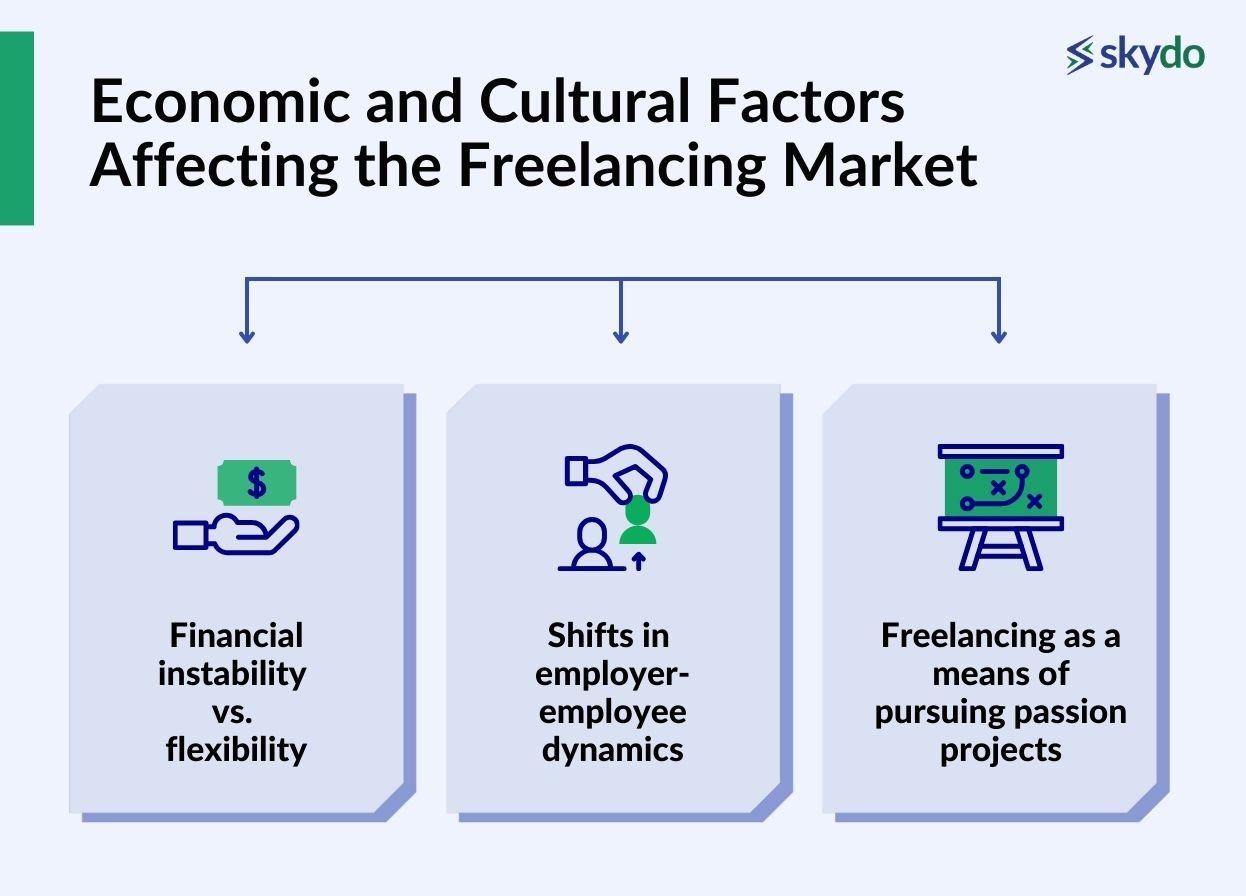
1. Financial instability vs. flexibility
While full-time jobs offer financial stability, they often lack flexibility. Conversely, freelancing gives work flexibility but there may not be steady income, especially in the beginning. However, with the massive layoffs globally, job security and financial stability are also concerning issues for professionals. In such a scenario, a lot of people are picking flexibility over financial stability.
According to a 2021 survey by EY, nine out of ten individuals want work flexibility related to when and where they work. Interestingly, more than 50% of professionals are willing to quit their jobs if they do not receive work flexibility. The desire for work flexibility is acting as a freelance professions accelerator.
2. Shifts in employer-employee dynamics
Employee work expectations have undergone a drastic change post-pandemic. Professionals are now looking for more health support from employers and seeking purpose and career growth. As a result, employer-employee relationship dynamics are changing. Many people are quietly quitting their jobs to get self-employed and start freelancing.
3. Freelancing as a means of pursuing passion projects
The remote work flexibility that people experienced during the pandemic has made a lot of professionals rethink their work preferences. There is a growing dislike for the regular 9-5 jobs that offer little to no flexibility.
According to the state of freelancing survey by Opinium, 65% of the freelancers felt motivated to do freelancing jobs because they were seeking flexibility to manage their own time. Further, 48% of freelancers chose freelance as a career because it allowed them to make decisions for themselves. 26% of the people started freelancing because they didn't want to go back to their full-time jobs.
Other key motivating factors that allure people to choose freelance jobs are an opportunity to pursue their passion, better compensation, and a sense of purpose.
Here are some tips on how to follow your passion through freelancing and fulfil your purpose.
Tips for Thriving as a Freelancer
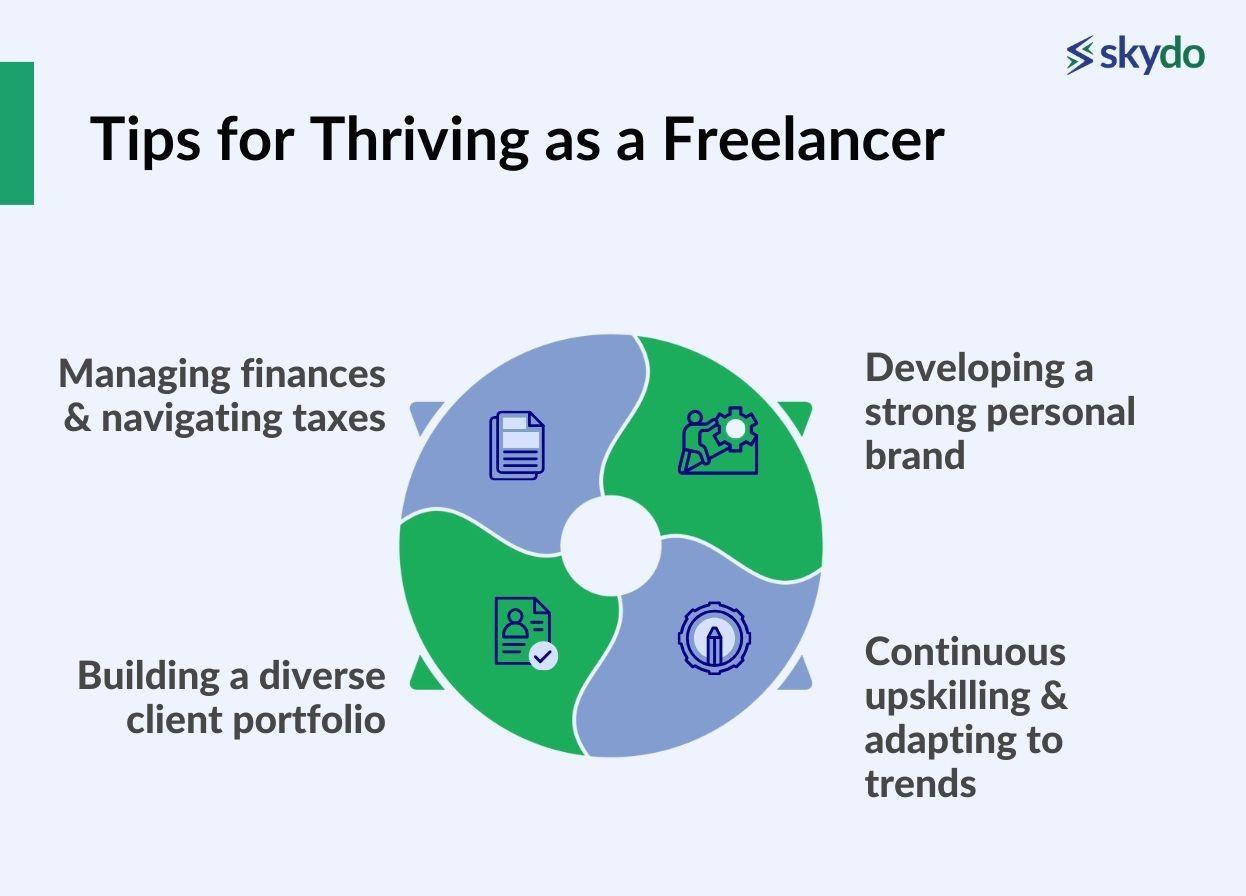
1. Developing a strong personal brand
One of the best ways to grow in freelancing professions is to build a personal brand to market your services to the target audience. Research suggests that personal branding is a great contemporary technique to grow your career because there is high competition among freelancers to gain visibility and secure more offers. Hence, you must master the art of personal branding to build a distinguished reputation and ultimately gain profits.
Some of the self-branding strategies that freelancers on Upwork use are:
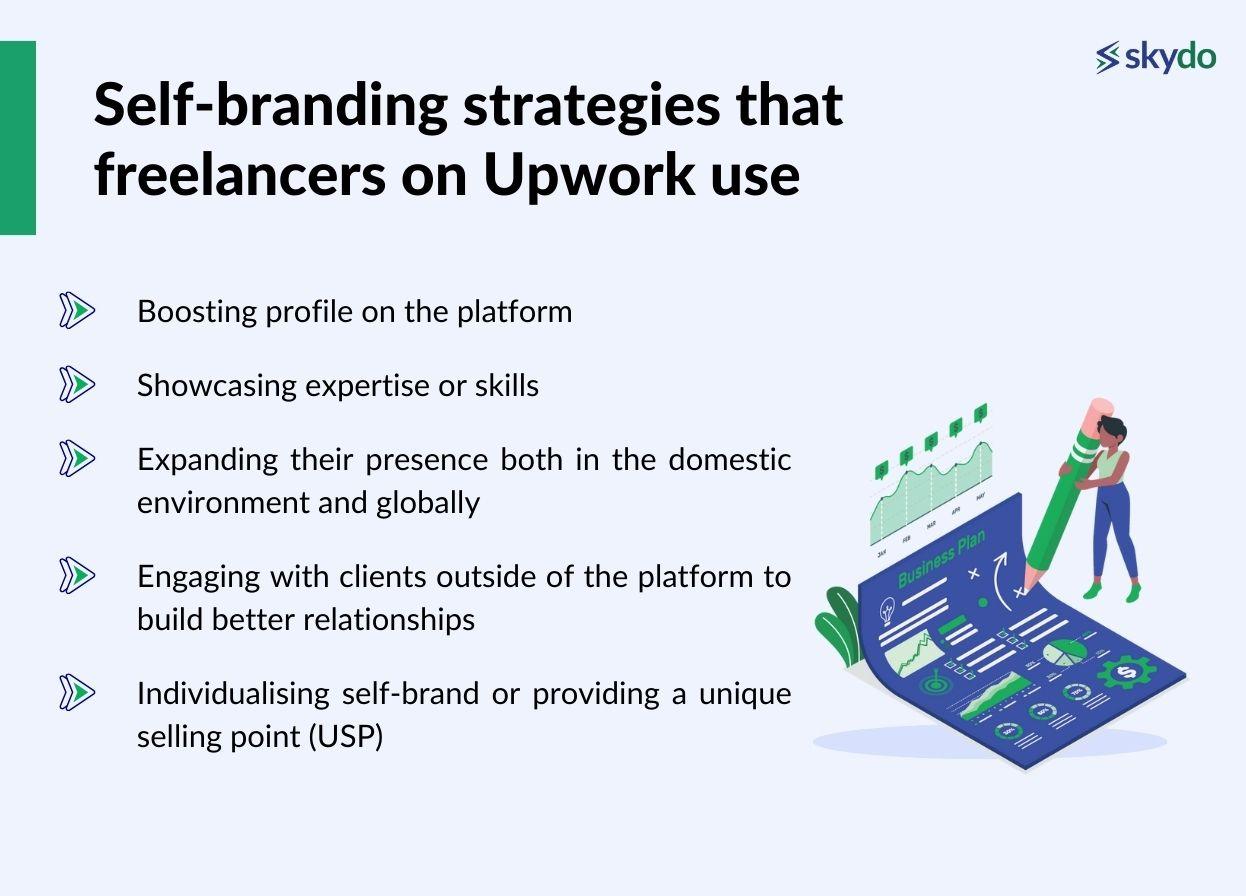
- Boosting profile on the platform
- Showcasing expertise or skills
- Expanding their presence both in the domestic environment and globally
- Engaging with clients outside of the platform to build better relationships
- Individualising self-brand or providing a unique selling point (USP)
You can use the strategies to grow your brand on gig work platforms.
Pro tip: One of the best ways to build a personal brand is to learn storytelling skills.
2. Continuous upskilling and adapting to trends
According to a 2020 McKinsey survey, 87% of the surveyed companies are either facing skill gaps or are likely to experience it in the next 3-5 years. There are two major ways organisations tackle the skills gap.
- Hire freelancers or contract workers to perform skilled jobs
- Train their existing employees
Since reskilling employees requires a lot of cost and resources, the majority of companies prefer to hire freelancers or gig workers. Thus, freelancers need to constantly upskill themselves with the latest industry demands to seek more clients. The following are some of the best ways for freelancers to upskill.
- Pursue online skill-building courses by Google, HubSpot, or other organisations
- Attend webinars and networking events
- Read market research and trends newsletters and blogs by various companies and business leaders
3. Building a diverse client portfolio
Goffman’s dramaturgical theory suggests that all humans are actors showcasing their performance and they seek to create an impression in the mind of other people. This is called the impression management motion, according to which we put on our best selves to impress others. One of the most remarkable ways for freelancers to impress others and get more clients is to create a portfolio displaying their best work.
A diverse work portfolio showcases your expertise and enhances your credibility. Thus, it serves as one of the best marketing tools to get more leads.
4. Managing finances and navigating taxes
Most freelancers do not earn a fixed income every month. While this offers unlimited earning potential, there can be downsides as well. Delayed payments and refusal to pay create uncertainty risk.
Hence, managing finances efficiently and learning about taxes is extremely crucial for the growth of a freelancing career. Here is how you can do it.
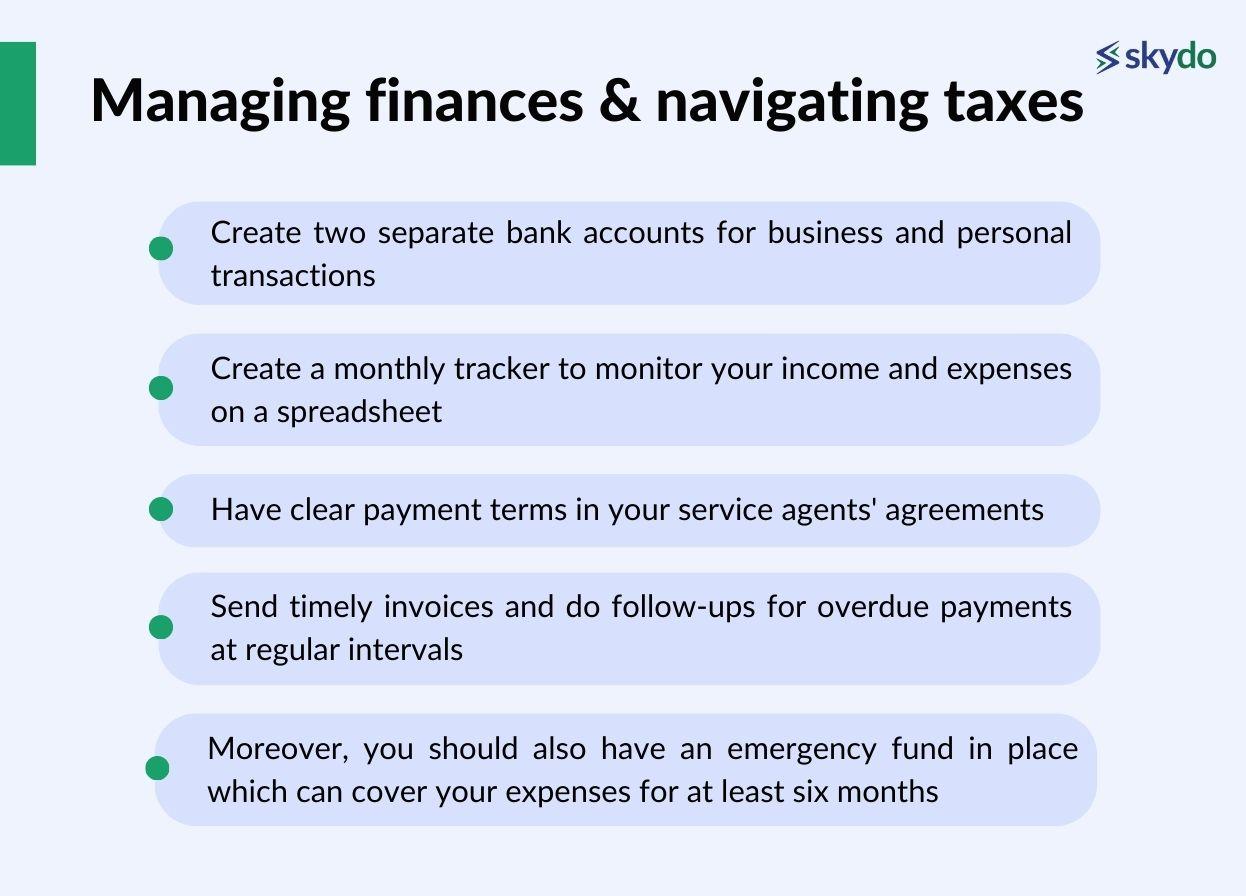
- Create two separate bank accounts for business and personal transactions
- Create a monthly tracker to monitor your income and expenses on a spreadsheet
- Have clear payment terms in your service agents' agreements
- Send timely invoices and do follow-ups for overdue payments at regular intervals
- Moreover, you should also have an emergency fund in place which can cover your expenses for at least six months
To learn about taxes, you can check this guide for freelancers.
Conclusion
Work flexibility is one of the key factors driving the growth of freelancing in the gig economy. Another crucial factor is the dynamic skill sector owing to technological advancements. Hence, constant upskilling has become non-negotiable for a successful freelancing career in the modern gig economy. Moreover, with the expected rapid growth of the freelancing sector, staying updated with the latest trends is pertinent to gaining a competitive edge.
Frequently Asked Questions
Q1. What is freelancing and how does it work?
Ans: Freelancing is a work arrangement where professionals, known as freelancers, offer their services on a project basis to clients. They operate independently, often remotely, taking on various freelance gigs across different professions. This flexible model allows freelancers to choose projects, set their rates, and manage their schedules.
Q2. What is a freelancer worker?
Ans: A freelancer worker is an independent professional who offers services on a temporary or project basis. Unlike traditional employees, freelancers operate as their own bosses, managing their workloads, setting rates, and choosing the projects they take on. This arrangement provides flexibility for both freelancers and clients.
Q3. What is a gig in freelancing?
Ans: In freelancing, a gig refers to a specific job or task that a freelancer takes on for a client. These freelance gigs can vary in duration and scope, ranging from short-term projects to ongoing collaborations. Freelancers often build their careers by accumulating a diverse portfolio of gigs in different areas of expertise.
Q4. How do you make money in a gig economy?
Ans: Making money in the gig economy involves freelancers offering their skills and services to clients on a project basis. Freelancers can set their rates, negotiate contracts, and take on multiple gigs simultaneously. Success in the gig economy often depends on building a strong personal brand, delivering high-quality work, and maintaining positive client relationships.
Q5. Is the gig economy good or bad?
Ans: The gig economy has both pros and cons. On the positive side, it offers flexibility, autonomy, and diverse opportunities for freelancers. However, challenges include the lack of job security and employee benefits. The impact of the gig economy can vary based on individual preferences and circumstances, making it essential for freelancers to carefully navigate and manage their careers.












